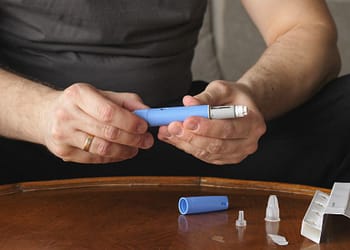Pain is a part of life. It can occur after a fall, during menstruation, or even after a visit to the dentist. In all of these cases, many people turn to fast-acting painkillers. One of the most commonly used is Enandol, a medication sold in pharmacies whose active ingredient is dexketoprofen trometamol.
This drug belongs to the nonsteroidal anti-inflammatory drug (NSAID) family and is indicated for the short-term treatment of mild to moderate acute pain in adults. Unlike other NSAIDs such as ibuprofen, Enandol acts more quickly thanks to its chemical structure, which facilitates absorption by the body.
Its main function is to block the action of enzymes called cyclooxygenases, which are responsible for producing prostaglandins. These substances are what cause inflammation, pain, and fever. By reducing their presence, the medication quickly relieves symptoms.
Are you interested in how dexketoprofen differs from ibuprofen? Check out our comparison between dexketoprofen and ibuprofen.
How do you take Enandol and what is the usual dosage?
Enandol is recommended for treating episodes of pain that do not require long-term treatment. It is especially indicated for muscle or joint pain, dysmenorrhea (menstrual pain), toothache, or discomfort following minor trauma. It should always be used under medical supervision and for a maximum of four days.
The usual adult dose is 12.5 mg every 4 to 6 hours or 25 mg every 8 hours, not to exceed 75 mg per day. For people over 65 years of age, or with reduced liver or kidney function, it is recommended to start with a maximum daily dose of 50 mg. Enandol comes in tablets and sachets of granules to dissolve in water.
Although it can be taken with or without food, doing so on an empty stomach accelerates absorption. However, if you have digestive discomfort, it is recommended to accompany it with food.
Contraindications: Who should not take it?
Not everyone can take Enandol. It is contraindicated in people allergic to dexketoprofen or other anti-inflammatory drugs, as well as in those who have suffered from gastric ulcers, digestive bleeding, inflammatory bowel disease, or severe heart, liver, or kidney failure. It should also not be taken during pregnancy, especially during the third trimester, or while breastfeeding. Its use in children under 18 years of age is not approved.
Always consult the official prospectus of the medication (only available in Spanish) for complete and up-to-date information.
Possible side effects of Enandol
Like all medications, Enandol can cause side effects. The most common include nausea, abdominal pain, diarrhea, or indigestion. Drowsiness or dizziness may also occur. In rare cases, severe allergic reactions, stomach ulcers, or bleeding may occur.
Therefore, it is recommended to limit its use to a few days and avoid combining it with other NSAIDs, anticoagulants, or medications that increase the risk of gastrointestinal damage.
Final tips for safe use
Enandol is a useful and effective tool when used correctly. Its rapid action makes it an attractive option for specific pain situations. But as with any drug, it is not without risks.
Taking this medication regularly and adhering to the recommended dosage is key to minimizing risks. It is not a chronic treatment, nor should it be used to relieve discomfort on a regular basis. If you have any questions, it is essential to consult a healthcare professional, as self-medication with NSAIDs can mask symptoms of more serious illnesses.
Don't know which doctor to see? Check out our article on medical specialties to know which one is appropriate in each case.






